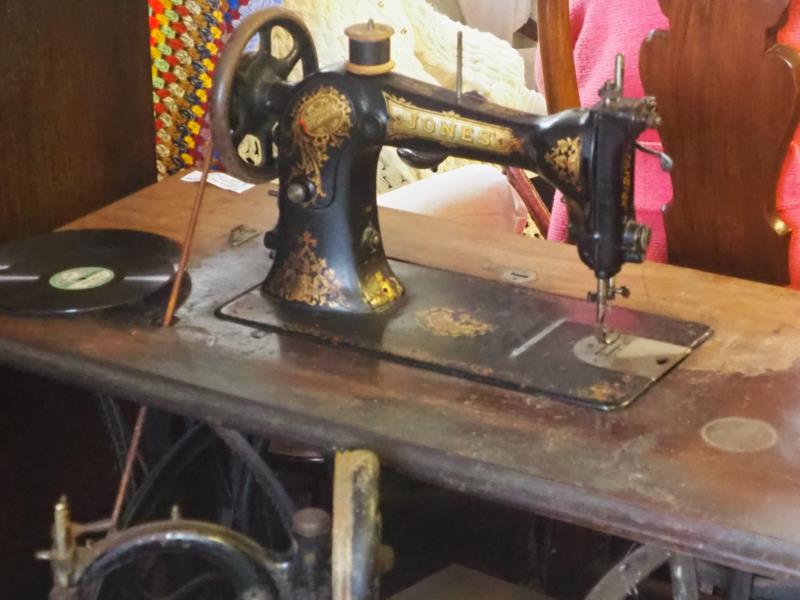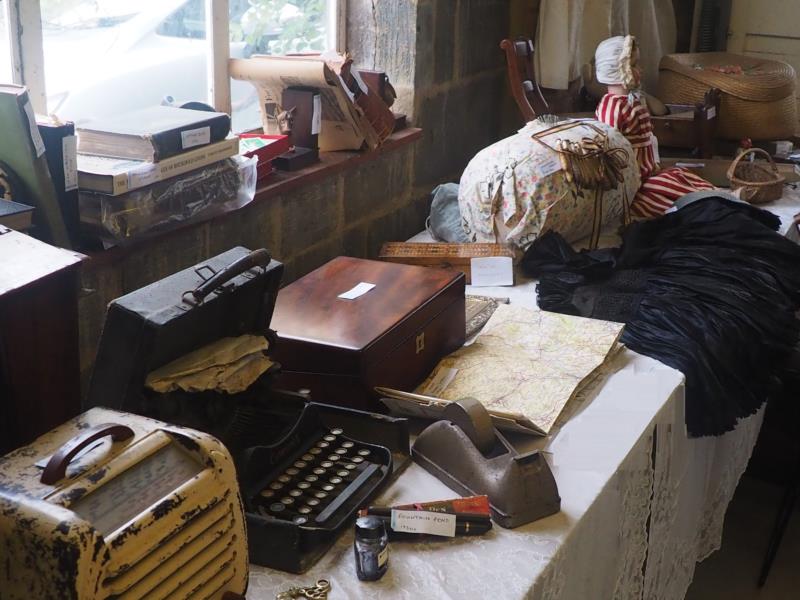Help Needed...
I'm struggling to identify some of the items, let alone what they are used for.
If you can - then Email: Leigh and I'll update the descriptions.

No electricity here in this sewing machine - the needle was moved up and down by pedal power.
Material moved forward by means of a knotched plate on which the material rested. It worked with the needle going up to move forward a fraction, dropped down below the surface level, moved back and came up to hold the material, just as the needle was coming down again. The user was required to guide it and keep it straight along the route of the stitching.
Another cotton bobbin operated under the plate to knot the stitch.

A far cry from the modern office but the typewriter was a precision tool. You had to feed paper into a roller at the top. Each key had a thin metal arm attached which swung up and hit an inked ribbon transferring the ink onto the paper (the ribbon, on reels, moved a fraction sideways with each key press, as did the roller. The end of the metal arm was engraved with the letter.
At the end of the line of text, a lever was used to return the roller back to the start of the line and rotate the roller just enough to move to the next line. Typo's meant winding the paper so you could paint out the mistake with a white fluid.
Re-aligning the paper to resume, could be a problem.
Note the selotape dispenser - that hasn't changed but for it now being plastic and much lighter.
Remember the portable radio, bottom left corner - you now use your phone - much better when out jogging.

